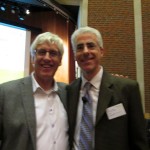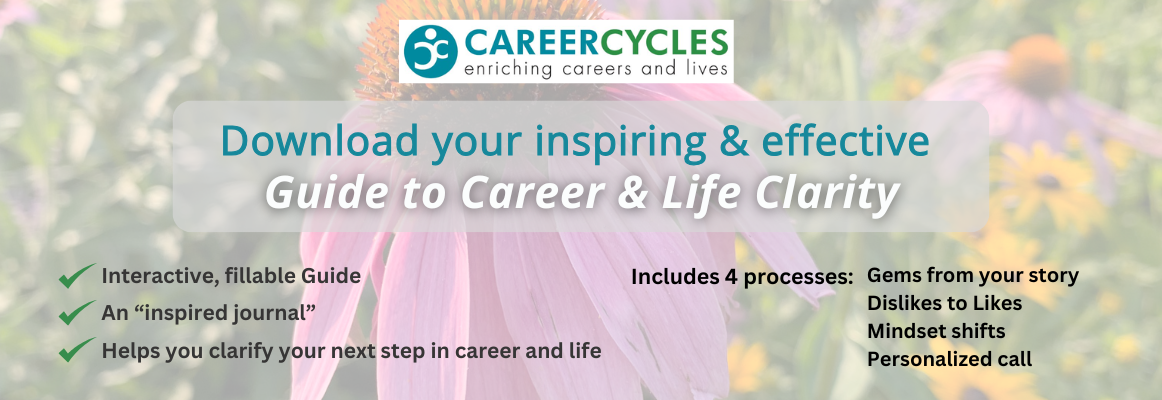From Insecurity and Doubt to Hope and Confidence: Evidence of Positive Outcomes Using a Holistic, Narrative Method – Keynote and Workshop by Mark Franklin
Did you attend the conference? Please let us know what you liked! What questions do you have? Post your response below or respond with an email to mark [at] careercycles.com Thank you!
Sparked by what you heard?
Learn more about training in CareerCycles narrative method of practice, click here.
Learn more about Who You Are MATTERS! career and life clarification game, click here.
Please sign up for SPARK News for twice monthly lessons learned from Career Buzz radio show, and upcoming guests. Sign up at right of this page.
How do you measure qualities like hope and optimism?
Nov. 29, 2013
Hello Dutch Conference delegates,
Dank u wel! It was a pleasure to share ideas with you. A few of you asked how to measure qualities like hope and optimism. I include below a few definitions and sample items from the measures I mentioned.
Psychological Capital Questionnaire (PCQ) (Luthans, Avolio, et al., 2007). Definition: “Who you are and what you can become in terms of positive development” (Luthans, Norman, et al., 2008, p. 223).
- Number of items: 24
- Source: http://www.mindgarden.com/products/pcq.htm
- Sample Items (Adapted with approval from the original questionnaire)
- Self-efficacy (6 items) is “having confidence to take on and put in the necessary effort to succeed at challenging tasks” Sample: “I feel confident analyzing a long-term problem to find a solution.”
- Optimism (6 items) is “Making a positive attribution about succeeding now and in the future” Sample: “I’m optimistic about what will happen to me in the future as it pertains to in my career and life.”
- Hope (6 items) is “Persevering toward goals and, when necessary, redirecting paths to goals in order to succeed” Sample: “If I should find myself in a jam in my career and life, I could think of many ways to get out of it.”
- Resiliency (6 items) is “When beset by problems and adversity, sustaining and bouncing back and even beyond to attain success” Sample: “I usually manage difficulties one way or another in my career and life.”
Curiosity and Exploration Inventory (CEI) (Kashdan, Gallagher, et al., 2009). Definition: “Positive emotional-motivational system associated with the recognition, pursuit, and self-regulation of novelty and challenge” (Kashdan, Rose, & Fincham, 2004, p.291).
- Number of items: 10
- Source: http://psychfaculty.gmu.edu/kashdan/CEI-II.pdf
- Stretching (5 items) is Motivation to seek out knowledge and new experiences. Sample: “I actively seek as much information as I can in new situations.”
- Embracing (5 items) is Willingness to embrace the novel, uncertain, and unpredictable nature of everyday life. Sample: “I am the kind of person who embraces unfamiliar people, events, and places.”
Personal Growth Initiative Scale (PGIS) (Robitschek, 1998). Definition: Active and intentional involvement in seeking growth and improving one’s self in different areas of his or her life (Robitschek, 1998, 1999).
- Number of Items: 9
- Source: http://www.ppc.sas.upenn.edu/personalgrowthscale.pdf
- Sample Items: “If I want to change something in my life, I initiate the transition process.”; “I know what I need to do to get started toward reaching my goals.” ; “I have a good sense of where I am headed in my life.”
References
Canadian Standards and Guidelines for Career Development Practitioners. Revised 2012 http://www.career-dev-guidelines.org/career_dev/ See in particular, Area of Specialization: Career Counselling, S3.2 Demonstrate Method of Practice in Interactions with Clients
Kashdan, T.B., Gallagher, M.W., Silvia, P.J., Winterstein, B.P., Breen, W.E., Terhar, D., & Steger, M.F. (2009). The Curiosity and Exploration Inventory-II: Development, factor structure, and initial psychometrics. Journal of Research in Personality, 43, 987-998.
Kashdan, T. B., Rose, P., & Fincham, F. D. (2004). Curiosity and exploration: Facilitating positive subjective experiences and personal growth opportunities. Journal of Personality Assessment, 82, 291–305
Luthans, F., Avolio, B.J., Avey, J.B., & Norman, S.M. (2007). Positive psychological capital: Measurement and relationship with performance and satisfaction. Personnel Psychology 60, 541-572.
Luthans, F., Norman, S. M., Avolio, B. J., & Avey, J. B. (2008). The mediating role of psychological capital in the supportive organizational climate—employee performance relationship. Journal of Organizational Behavior, 29, 219–238.
Robitschek, C. (1998). Personal growth initiative: The construct and its measure. Measurement and Evaluation in Counseling and Development, 30, 183-198.
Robitschek, C., & Cook, S. W. (1999). The influence of personal growth initiative and coping styles on career exploration and vocational identity. Journal of Vocational Behavior, 54, 127-141.
Zikic,J., Franklin,M. (2010). Enriching careers and lives: introducing a positive, holistic, and narrative career counseling method that bridges theory and practice. Journal of Employment Counseling, 47-4, 180-189.



Leave A Comment
You must be logged in to post a comment.